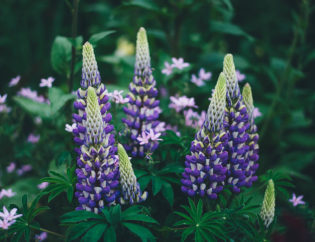
As Southern California gardeners select drought-friendly plants and keep water conservation in mind, it also would be wise to not forget about maintenance.
Organizational and upkeep tips can help avoid the hits and misses. And for those with questions or who simply like doing things by the book, there are plenty of options including a recently released title: “California Friendly: A Maintenance Guide for Landscapers, Gardeners and Land Managers,” by Douglas Kent.
For Kent, it’s not about sales. In fact, through a first-ever collaboration between the Los Angeles Department of Water and Power, the Metropolitan Water District and the Southern California Gas Company, the books are free. The idea is to provide information that helps gardeners create a space that is beautiful and sustainable for the long term.
Upkeep tips can help
@Gardenynews
Many homeowners listened to the clarion calls to conserve water, ripping out more than 170 million feet of thirsty green lawns during the past eight years, Kent said.They replaced the grass with “California-friendly” landscaping.
Yet, for many, maintaining those landscapes hasn’t been easy, resulting in sad-looking and ecologically challenged yards.
Couple that with pronouncements about the drought the state has battled for years being over and the lifting of some water restrictions, and concerns arise — people will revert back to more familiar water-wasting efforts.
That shouldn’t happen, Kent said. The reliability on water is dependent on having everyone use water wisely.
“It (the book) covers the key aspects of managing a modern landscape: irrigation and working with recycled water; water, fertilization and regeneration requirements for hundreds of plants (most native); natural strategies for weed and pest problems; and managing storm water capture opportunities, including rain barrels,” he said in an email.
The book is comprehensive — with chapter after chapter of do’s, don’ts and advice — and there’s also answers to some important questions. How often should you water? How can you handle natural pest control? How can you manage various surfaces and runoff? Which grasses, perennials, shrubs, succulents and cacti work and, better yet, how do you take care of them properly?
Consider the book a guide and resource.
“Creating and maintaining landscapes takes all kinds of people: owners, managers, contractors, vendors and specialists are vital to a landscape’s success. But it is the men and women in our gardens that ultimately get the job done — the people who get their hands dirty hauling manure, scraping their skin reaching for a weed and enduring harsh weather to preserve beautiful spaces,” he wrote in the book’s dedication.
Kent wants gardeners and consumers to think beyond plant lists and irrigation practices and accept the belief that treating the Southern California landscape correctly directly affects its health and vibrancy along with the people who live here.











